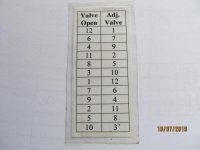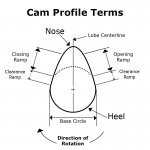AUSMHLY
Yoda
Offline
Hello. This is my first attempt at adjusting the valves.
The shop manual states use of a .012 gauge, screwdriver and wrench, but does not mention how to get the valves in the positions needed.
1) What's the best/easiest way. I've used the starter solenoid, but it's a or miss knowing if the valve is in it's lowest position.
Per Youtube, some car manuals state there is an order of which valves to adjust.
2) Is there a valve adjustment order for the Healey?
3) Can two valves be adjusted at the same time? Example, when adjusting valve #1, valve #12 should be in it's lowest position. I noticed valve #10 seemed to be in it's lowest position at the same time too. Was it? If so then I could adjust valve #3 at the same time?
Anything else I should be aware of?
The shop manual states use of a .012 gauge, screwdriver and wrench, but does not mention how to get the valves in the positions needed.
1) What's the best/easiest way. I've used the starter solenoid, but it's a or miss knowing if the valve is in it's lowest position.
Per Youtube, some car manuals state there is an order of which valves to adjust.
2) Is there a valve adjustment order for the Healey?
3) Can two valves be adjusted at the same time? Example, when adjusting valve #1, valve #12 should be in it's lowest position. I noticed valve #10 seemed to be in it's lowest position at the same time too. Was it? If so then I could adjust valve #3 at the same time?
Anything else I should be aware of?
Last edited:

 Hi Guest!
Hi Guest!

 smilie in place of the real @
smilie in place of the real @
 Pretty Please - add it to our Events forum(s) and add to the calendar! >>
Pretty Please - add it to our Events forum(s) and add to the calendar! >> 





